Chengtoushan Ruins: Unveiling the Secrets of Ancient Chinese Civilization
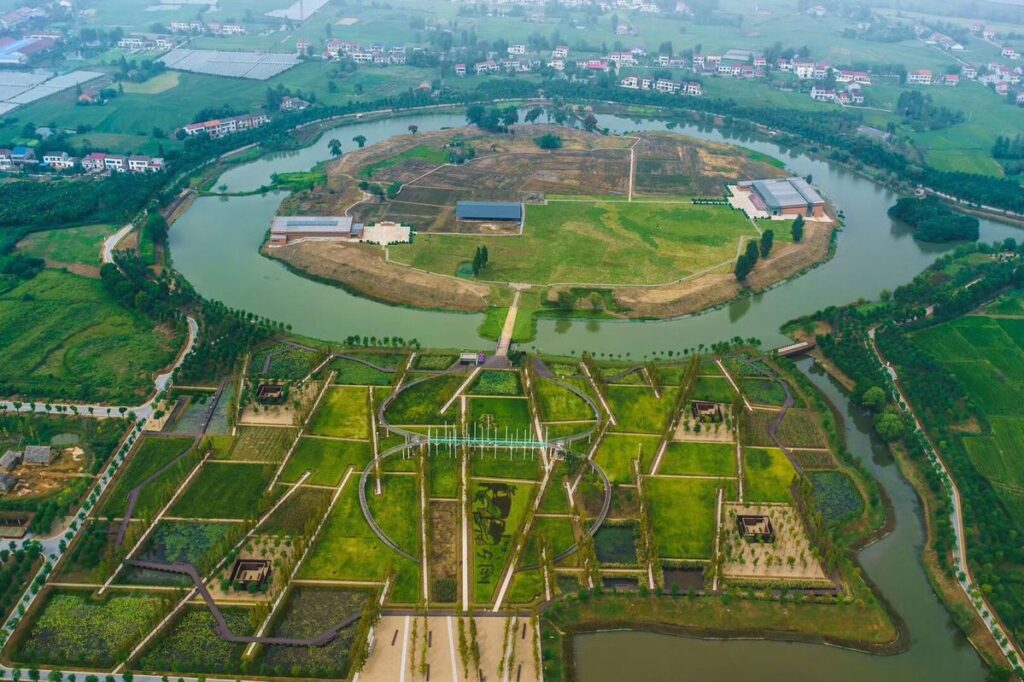
An Essential Guide to Visiting Chengtoushan Ruins
In This Guide
- An Essential Guide to Visiting Chengtoushan Ruins
- The Rich History and Legends of Chengtoushan Ruins
- Main Highlights: What You Absolutely Can’t Miss
- Planning Your Visit: A Practical Guide
- Tickets: Prices, Booking, and Tips
- How to Get There: A Complete Transportation Guide
- Local Cuisine and Accommodation Nearby
- Frequently Asked Questions
- Final Thoughts on Your Trip
Nestled in the serene landscapes of Hunan Province, the Chengtoushan Ruins beckon to travelers with a profound sense of history and the allure of ancient civilizations. This archaeological site, dating back over 5,000 years, is celebrated as the earliest known city in China and the birthplace of rice cultivation. For those passionate about history and culture, Chengtoushan offers an unparalleled glimpse into the dawn of Chinese civilization.
As you approach the site, you will be enveloped by the lush greenery of the surrounding countryside, a stark contrast to the bustling urban centers of modern China. The ruins themselves, comprising a circular city fortified by a moat, present an evocative tableau where visitors can almost hear the echoes of daily life from millennia past. The site’s designation as a national heritage site underscores its significance, not just as an archaeological treasure, but as a pivotal chapter in the story of human civilization.
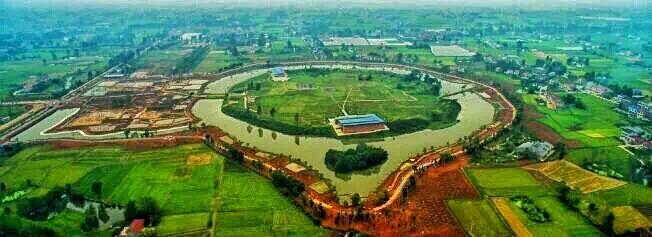
Chengtoushan Ruins.
In recent years, Chengtoushan has undergone a transformative journey, evolving from a hidden gem into a vibrant archaeological park designed to enhance visitor engagement while preserving its historical integrity. The thoughtful integration of educational pathways, wetlands, and even a stunning glass bridge allows visitors to immerse themselves in the ancient landscape while witnessing the ongoing agricultural practices that sustain the local community today.
Whether you are an avid historian, a curious traveler, or someone seeking a deeper understanding of Chinese culture, Chengtoushan Ruins offers a compelling narrative that transcends time. Prepare to step back into history and discover the roots of a civilization that has shaped not only Hunan but also the broader tapestry of humanity.
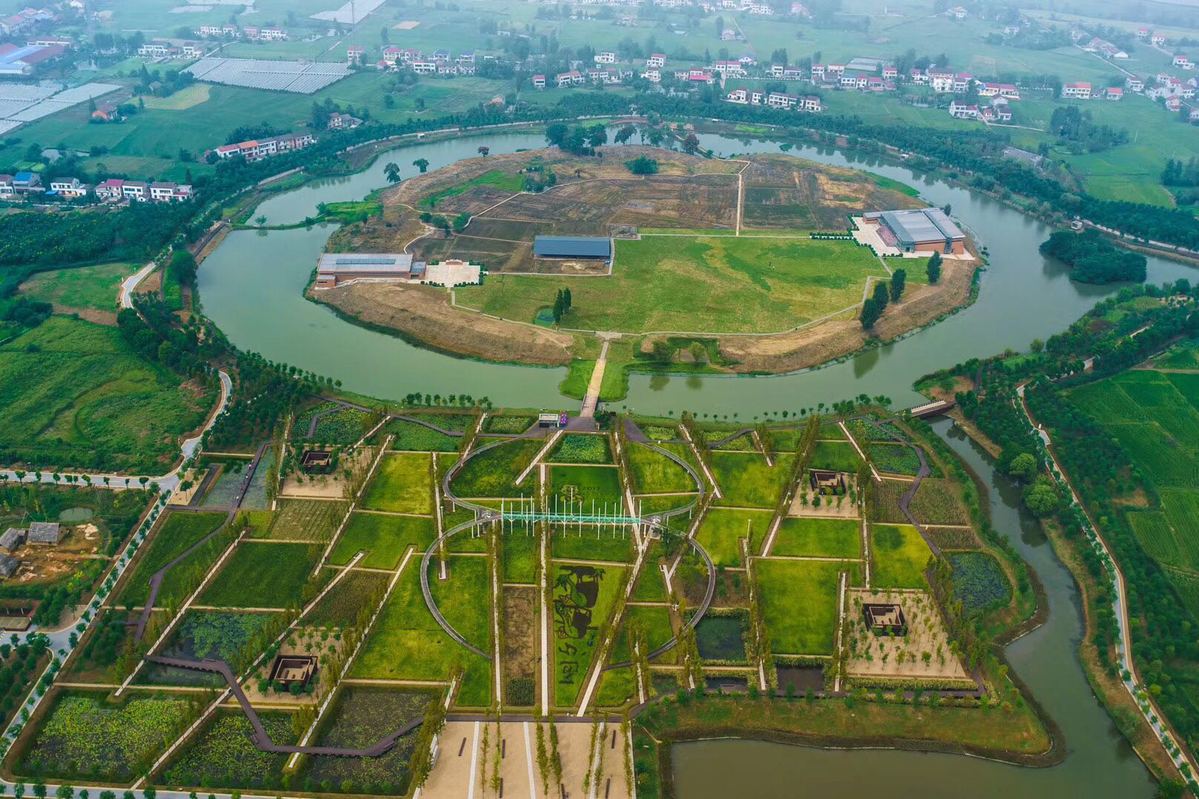
Chengtoushan Ruins.
The Rich History and Legends of Chengtoushan Ruins
Nestled in the lush landscapes of Hunan Province, the Chengtoushan Ruins stand as a testament to China’s ancient civilization, offering visitors a unique journey through time. This archaeological site, recognized as the earliest urban settlement in China, harbors rich history and intriguing legends that paint a vivid picture of life in the region thousands of years ago.
A Glimpse into Ancient Civilization
Discovered in 1979, the Chengtoushan site has been a pivotal find in understanding the origins of Chinese urbanism. Dating back to the Neolithic period, approximately 5,000 years ago, this settlement was not only the first to cultivate rice but also showcased advanced agricultural techniques that laid the foundation for future dynasties. The archaeological findings, including remnants of circular city walls, homes, and burial sites, reveal a sophisticated societal structure, complete with evidence of trade and communal living.
The Legend of Rice Cultivation
One of the most captivating legends associated with Chengtoushan is that of the “Rice God.” According to local folklore, a benevolent deity blessed the inhabitants with the knowledge of rice cultivation, enabling them to thrive in an otherwise challenging environment. This legend highlights the deep spiritual connection the ancient people had with their land, symbolizing prosperity and abundance. To this day, the community celebrates the harvest season with festivals that honor this deity, blending ancient beliefs with contemporary practices.

Chengtoushan Ruins.
The Moat and the Silent City
Another fascinating aspect of Chengtoushan is its circular city structure surrounded by a moat, often referred to as the “Silent City.” Local legends suggest that the moat was not merely a defensive mechanism but also a mystical barrier that protected the inhabitants from malevolent spirits. It is said that when the city was alive with activity, the waters of the moat shimmered with the souls of ancestors, guiding and watching over their descendants. This connection between the living and the spiritual realm continues to resonate with locals, who often speak of feeling the presence of their ancestors while exploring the ruins.
Archaeological Significance and Modern Revival
Chengtoushan’s designation as a national heritage site has transformed it from a hidden gem into a focal point for cultural tourism in Hunan. The site has undergone significant restoration, blending modern landscape architecture with its ancient roots. The introduction of a glass bridge allows visitors to witness the archaeological layers from above, creating an immersive experience that connects the past with the present.
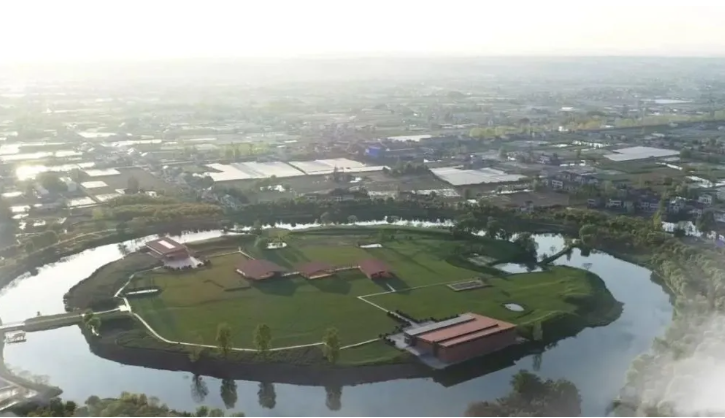
Chengtoushan Ruins.
The ongoing efforts to develop Chengtoushan into an educational and recreational space reflect a broader movement to honor and preserve China’s rich historical legacy. As visitors stroll through the site, they are invited not just to observe but to engage with the land—participating in rice planting and harvesting—thus breathing life into ancient traditions.
Conclusion
The Chengtoushan Ruins offer a captivating blend of history and legend, serving as a portal to the ancient world of Chinese civilization. For travelers seeking to understand the depths of Chinese culture, a visit to this archaeological site is not only about witnessing the remnants of a forgotten city but also about engaging with the narratives that have shaped its identity. Here, history is alive, inviting you to explore, reflect, and connect with the essence of a civilization that continues to thrive in the hearts of its people.
Main Highlights: What You Absolutely Can’t Miss
Discover the Timeless Allure of Chengtoushan Ruins
Nestled in the captivating landscape of Hunan Province, the Chengtoushan Ruins stand as a testament to China’s ancient civilization and agricultural innovation. Known as the site of the earliest city in China and the birthplace of rice cultivation, this archaeological wonder offers an extraordinary glimpse into the past. Here are the main highlights you absolutely can’t miss during your visit to this remarkable site.
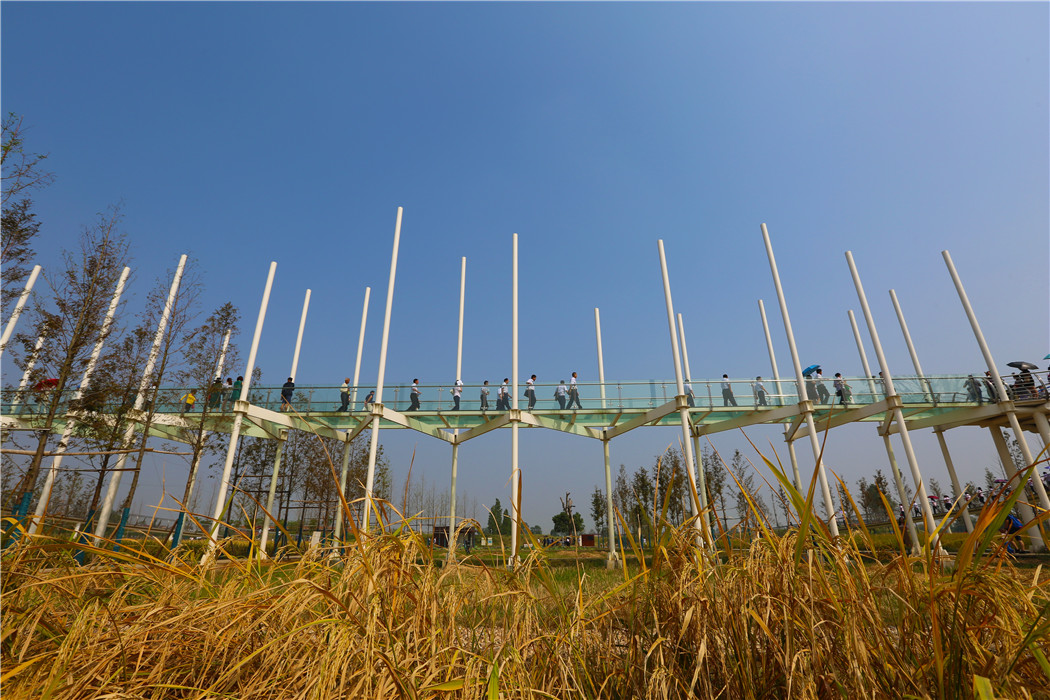
Chengtoushan Ruins.
1. The Archaeological Site Itself
- Historic Significance: Chengtoushan was rediscovered in 1979 and is celebrated for its groundbreaking contributions to our understanding of early Chinese society. As the site of a complex city dating back over 5,000 years, it provides invaluable insights into ancient urban planning and agriculture.
- The Circular City: Explore the remnants of the circular city surrounded by a moat, which serves as a silent theater where visitors can imagine the lives of its ancient inhabitants.
2. The Glass Bridge
- A Unique Perspective: Walk across the stunning glass bridge that elevates you four meters above the ground, offering panoramic views of the archaeological site and the lush surrounding landscape. The transparent panels allow sunlight to nourish the crops below, creating a harmonious blend of ancient and modern design.
- Interactive Experience: The bridge serves as a viewing platform, allowing visitors to engage with the cultural and agricultural activities taking place beneath it, making your visit both educational and immersive.
3. Outdoor Museum of Rice
- Agricultural Heritage: Discover the outdoor museum dedicated to rice cultivation, showcasing various native rice cultivars and sustainable farming practices. This area not only highlights the importance of rice in Chinese culture but also emphasizes ecological recovery and local agriculture.
- Engage with Farmers: Get hands-on experience by interacting with local farmers. Participate in rice planting and harvesting, giving you a true taste of rural life and its connection to ancient practices.
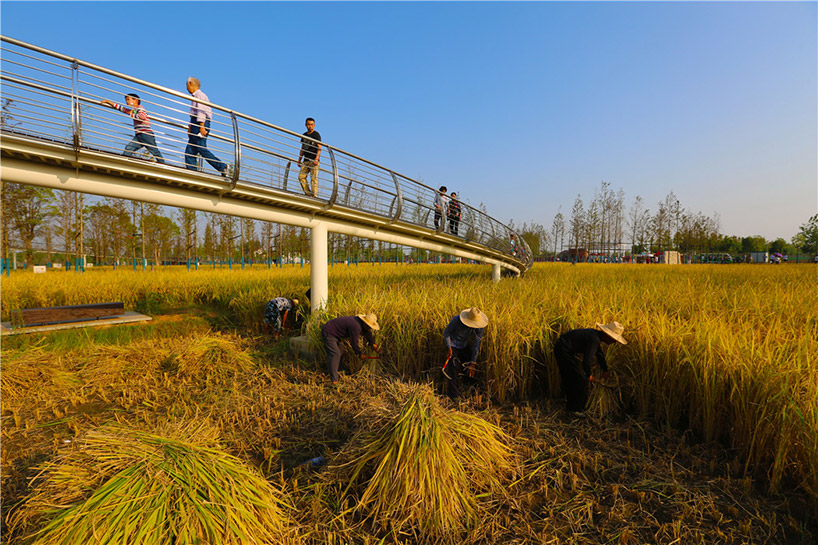
Chengtoushan Ruins.
4. Ecological Restoration
- Natural Beauty: The site features diverse wetland plants and patches of native trees that enhance the ecological landscape surrounding the ruins. This restoration effort reflects a commitment to preserving the integrity of the site while fostering a productive environment.
- Scenic Pathways: Stroll along beautifully designed paths that meander through the restored landscapes, offering picturesque views and a serene atmosphere.
5. Cultural and Educational Programs
- Workshops and Tours: Take advantage of guided tours and educational programs that delve deeper into the history of Chengtoushan. These experiences are designed to enrich your understanding of the ancient civilization and its agricultural advancements.
- Family-Friendly Activities: With interactive activities and workshops, Chengtoushan is an ideal destination for families, making history engaging and fun for visitors of all ages.
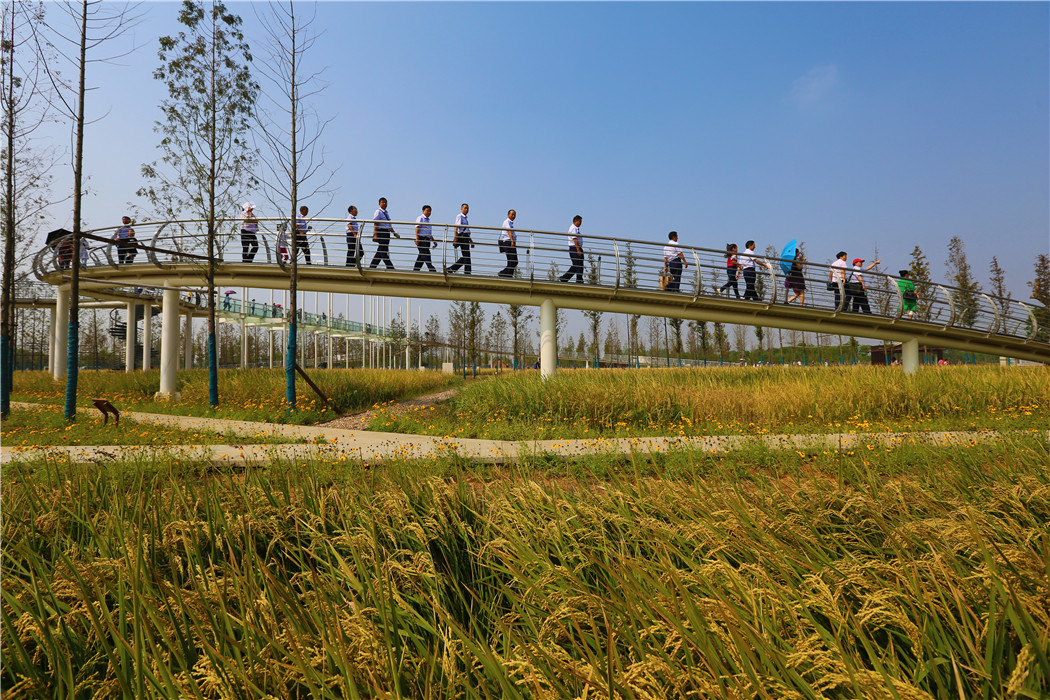
Chengtoushan Ruins.
6. Nearby Attractions
- Mausoleum of Chu Dynasty: Just a short distance away, this site offers a glimpse into the rich history of the Chu Dynasty, known for its contributions to Chinese culture and governance.
- Mt. Pengtou Site: For those who appreciate natural beauty, this nearby mountain provides spectacular views and opportunities for hiking, complemented by the historical backdrop of the Chengtoushan ruins.
Final Thoughts
Visiting the Chengtoushan Ruins is not just a journey through ancient history; it is an exploration of the roots of Chinese civilization and agricultural heritage. With its breathtaking landscapes, engaging activities, and rich cultural significance, this site promises an unforgettable experience for history enthusiasts and casual travelers alike. Make sure to add it to your itinerary when exploring the wonders of Hunan Province!
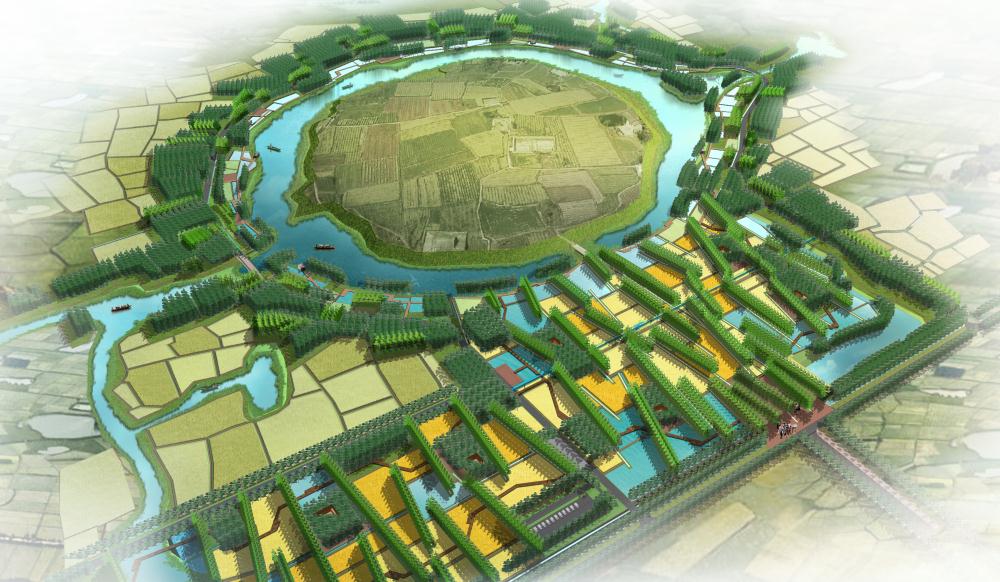
Chengtoushan Ruins.
Planning Your Visit: A Practical Guide
Essential Information for Your Journey to Chengtoushan Ruins
Nestled in the picturesque Hunan Province, the Chengtoushan Ruins (城头山遗址) offer an intriguing glimpse into one of the earliest urban settlements in China, dating back over 4,000 years. This archaeological site not only showcases the beginnings of rice cultivation but also presents a unique opportunity to engage deeply with China’s ancient history. For international travelers seeking to explore this captivating destination, here’s a comprehensive guide to planning your visit.
Location and Accessibility
Address:
Nanyue Village, Chexi Country,
Li County, Hunan Province, China
Postal Code: 415503
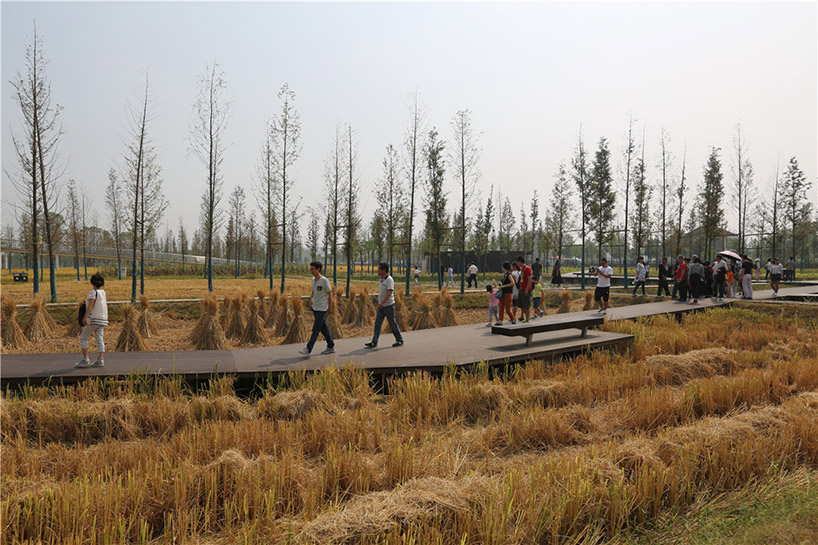
Chengtoushan Ruins.
Getting There:
– By Air: The nearest major airport is Changde Airport (CGD), which is well-connected to several cities in China. From the airport, you can take a taxi or arrange for a pickup to reach the site.
– By Train: The closest railway station is in Changde, from where you can take a local bus or taxi to Li County.
– By Road: Buses and taxis are readily available from nearby cities. If you prefer to drive, ensure you have a GPS or map application that covers rural areas.
Opening Hours
Chengtoushan Ruins are open to visitors from 8:00 AM to 6:00 PM daily. It is advisable to arrive early to fully enjoy the site and surrounding attractions without the crowds.
Admission Fees
While specific ticket prices can vary, it is generally recommended to check local resources or the official site for the latest information regarding admission fees. Discounts may be available for students and seniors.
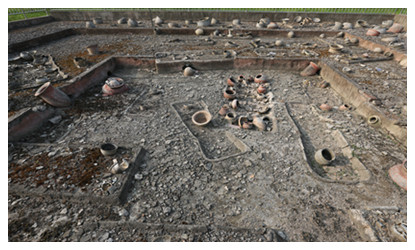
Chengtoushan Ruins.
What to Expect
1. Archaeological Features:
Walk through the remnants of an ancient city, including the circular city layout and moats. The site is designed to encourage imaginative exploration, allowing you to visualize life in ancient China.
2. Educational Opportunities:
The park features informative displays and guides that provide context to the ruins, explaining their historical significance and the importance of rice cultivation.
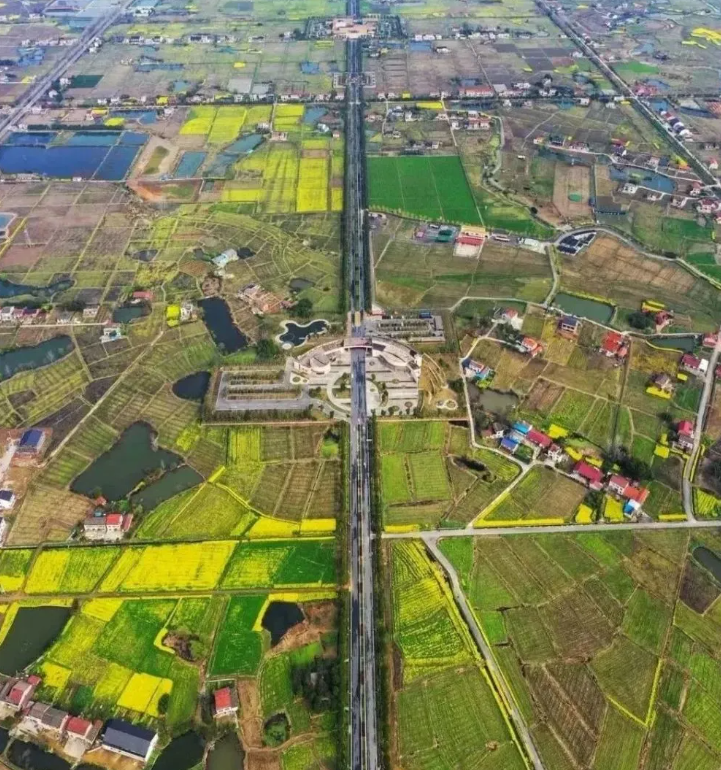
Chengtoushan Ruins.
3. Ecological Design:
The surrounding landscape includes agricultural fields that are part of an interactive experience. Visitors can observe rice cultivation and may even participate in farming activities, bridging the gap between history and present-day agricultural practices.
4. Scenic Views:
Don’t miss the glass bridge that offers stunning views of the archaeological site while allowing sunlight to nourish the crops below. This innovative feature enhances your visit by providing a unique perspective on the integration of history and landscape.
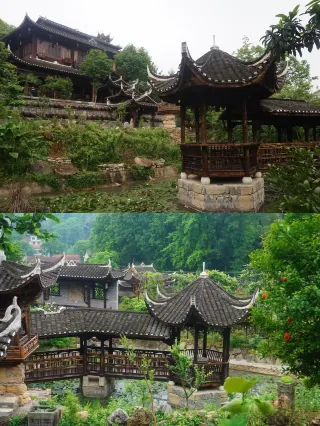
Chengtoushan Ruins.
Nearby Attractions
Chengtoushan is not just a standalone attraction; it’s surrounded by several sites of interest:
- Mt. Pengtou Site (0.9 mi away) – Explore ancient ruins with breathtaking natural scenery.
- Mausoleum of Chu Dynasty, Jiuli – A remarkable historical site showcasing the rich heritage of the Chu Dynasty.
- Lizhou Ancient City Wall – A glimpse into the architectural marvels of ancient China.
Dining and Accommodation
Restaurants:
While options near the site may be limited, local eateries offering traditional Hunan cuisine can be found in Li County. Be sure to try local specialties such as spicy fish and stinky tofu.
Accommodation:
For a more immersive experience, consider staying in Li County. Options range from budget motels to mid-range hotels, ensuring comfort during your exploration of this historical region.
Practical Tips
- Language: English may not be widely spoken, so consider downloading translation apps or learning a few basic Mandarin phrases to enhance communication.
- Cash: While some places may accept cards, it’s advisable to carry cash, especially in rural areas.
- Weather: Check the weather forecast before your visit. Hunan can be humid, particularly in summer, so dress comfortably and stay hydrated.
Conclusion
A visit to the Chengtoushan Ruins promises to be a fascinating journey through time, offering insights into one of China’s earliest civilizations. With its rich history, stunning landscapes, and engaging activities, this site is a must-see for travelers interested in Chinese culture and heritage. Plan your trip well, and prepare to be captivated by the stories that this ancient site has to share.
Tickets: Prices, Booking, and Tips
Visiting the Chengtoushan Ruins: Ticket Information and Travel Tips
Exploring the Chengtoushan Ruins is not just a journey into China’s ancient past but a unique opportunity to witness one of the earliest known urban settlements in the country. Whether you’re a history enthusiast or simply in search of a captivating cultural experience, understanding the ticketing process and planning your visit can enhance your adventure. Here’s everything you need to know.
Ticket Prices
- General Admission: Approximately CNY 80 (around USD 12)
- Students: Reduced price of CNY 40 (around USD 6) with valid student ID.
- Children under 6: Free entry.
- Senior Citizens: Discounts may apply; check local regulations.
Booking Information
Tickets can be purchased in several ways:
-
On-Site Purchase: Tickets are available at the entrance of the archaeological park. However, during peak tourist seasons, it’s advisable to arrive early to avoid long queues.
-
Online Booking: For convenience, tickets can be booked through various Chinese travel platforms such as Ctrip or Fliggy. This option allows you to secure your entry in advance, especially during busy periods.
-
Group Discounts: If you are traveling with a group (usually 10 or more), inquire about group rates, which can provide significant savings.
Visiting Hours
- Open Daily: 8:00 AM – 6:00 PM
- Last Admission: 5:00 PM
- Closed: Public holidays may affect opening hours; always check in advance if you’re visiting during a holiday season.
Tips for Your Visit
-
Best Time to Visit: To enjoy cooler weather and fewer crowds, consider visiting during the spring (March to May) or fall (September to November). The lush landscapes and comfortable temperatures make for an ideal exploration experience.
-
Transportation: The Chengtoushan Ruins are located in Li County, Hunan Province. The best way to reach the site is by taxi or local bus services. If you’re coming from Changde, it’s about a 30-minute drive.
-
Plan for a Full Day: The site is extensive, and there are various outdoor exhibits and trails to explore. Allocate enough time to fully appreciate the ruins and the surrounding archaeological park.
-
What to Bring: Comfortable walking shoes are a must, as the terrain can vary. Bring water, sunscreen, and a hat, especially if visiting in the summer months.
-
Photography: The unique landscapes and ancient structures provide fantastic photo opportunities, so don’t forget your camera!
-
Local Cuisine: After your exploration, consider trying local Hunan cuisine at nearby restaurants to complete your cultural experience.
With proper planning and a sense of adventure, your visit to the Chengtoushan Ruins can be both enlightening and enjoyable, offering a glimpse into one of the most significant archaeological sites in China.
How to Get There: A Complete Transportation Guide
Getting to Chengtoushan Ruins: Your Transportation Guide
Visiting the Chengtoushan Ruins (城头山遗址) is a journey into the depths of Chinese history, where you can explore the site of one of the earliest known cities in China. Located in Li County, Hunan Province, these ancient ruins are not only rich in cultural significance but also accessible to international travelers eager to delve into China’s past. Here’s how to make your way to this fascinating archaeological site.
Arrival in China
- Air Travel:
- Major Airports: The closest major airports to Chengtoushan are Changde Airport (CGD) and Changsha Huanghua International Airport (CSX).
-
International Connections: Changsha Huanghua International Airport offers more extensive international connections, so consider flying into there and then making your way to Li County.
-
Domestic Flights:
- If you land in Changsha, you can catch a domestic flight to Changde, which is a short journey of about 45 minutes.
From Changde to Li County
- Bus Services:
- Direct Buses: Upon arrival at Changde Airport or Changde Railway Station, look for direct buses to Li County. Buses run frequently and the journey takes approximately 1 to 1.5 hours.
-
Tickets: Tickets can usually be purchased on the spot at the bus station, but it’s wise to check schedules in advance, especially during peak travel seasons.
-
Taxi and Ride-sharing:
- Taxi: Taxis are available at the airport and railway stations. The fare from Changde to Li County is reasonable, and the trip takes around 1 hour.
- Ride-sharing Apps: Apps like Didi Chuxing operate in this region, providing a convenient option for those who prefer a more personalized travel experience.
Reaching Chengtoushan Ruins
- Local Transportation:
- Public Buses: Once in Li County, you can take local buses that head towards the Chengtoushan Ruins. They are affordable and offer a glimpse into everyday life in the region.
-
Taxis: Alternatively, taxis are readily available for hire in Li County. A taxi ride to the ruins from the town center should cost around 30-50 CNY.
-
Walking and Biking:
- For the more adventurous, consider renting a bike or simply walking from nearby accommodations to the ruins. The surrounding landscape is picturesque and offers a serene environment to enjoy as you approach the site.
Practical Tips
- Best Time to Visit: The Chengtoushan Ruins are open daily from 8:00 AM to 6:00 PM. Plan your visit early in the day to avoid crowds and to fully appreciate the site.
- Language Considerations: While major transportation hubs will have English speakers, it’s helpful to have a translation app or a phrasebook for communicating in smaller towns.
- Cash and Payment: Although many places accept mobile payments, it’s a good idea to carry some cash (Chinese Yuan) for local transportation and small purchases.
Nearby Attractions
While you’re in the area, consider visiting nearby historical sites such as:
– Mausoleum of the Chu Dynasty: A short trip from Chengtoushan, this site is rich in history and offers additional insights into ancient Chinese culture.
– Mt. Pengtou Site: An archaeological site that complements the history of Chengtoushan and is worth exploring.
With this guide, you’re well-equipped to navigate your way to the Chengtoushan Ruins and immerse yourself in the rich tapestry of China’s ancient heritage. Enjoy your journey through time!
Local Cuisine and Accommodation Nearby
When exploring the Chengtoushan Ruins, immerse yourself not only in the rich tapestry of ancient Chinese history but also in the delightful local cuisine and comfortable accommodation that the area has to offer. Here’s a guide to enhance your travel experience.
Culinary Delights
1. Local Specialties
The cuisine around Chengtoushan is deeply influenced by the Hunan province’s culinary traditions, known for its bold flavors and spiciness. Be sure to try:
- Dongan Chicken: A regional favorite, this dish features tender chicken cooked with a medley of spices, chilies, and herbs, offering a tantalizing taste of local flavors.
- Steamed Fish with Chili Sauce: Freshwater fish is often prepared with a spicy, aromatic chili sauce, showcasing the region’s love for heat and flavor.
- Hunan Rice Noodles: These noodles are often stir-fried with vegetables and meat or served in a rich broth, making for a hearty meal after a day of exploring.
2. Recommended Dining Spots
Here are a few restaurants near the Chengtoushan Ruins where you can savor local dishes:
- Li County Local Cuisine Restaurant: A cozy spot known for its authentic Hunan dishes and warm atmosphere, perfect for experiencing traditional flavors.
- Nanyue Village Eatery: Located just a short distance from the archaeological site, this eatery offers a mix of local specialties and familiar favorites, ideal for both adventurous and cautious eaters.
Comfortable Stays
After a day of exploring the ancient site, retreat to one of the nearby accommodations that offer comfort and local charm:
1. Nanyue Hotel
– Description: Situated close to the Chengtoushan Ruins, Nanyue Hotel provides modern amenities while reflecting traditional Hunan architecture. Guests can enjoy spacious rooms with scenic views of the surrounding landscape.
– Highlights: On-site dining featuring local cuisine, a welcoming staff, and easy access to key attractions.
2. Li County Guesthouse
– Description: For a more intimate experience, this guesthouse offers a homey atmosphere with personalized service. The rooms are tastefully decorated and provide a glimpse into local life.
– Highlights: Homemade breakfast options, friendly hosts who can provide insights about local culture and attractions, and a peaceful setting perfect for relaxation.
3. Tiangong Mountain Resort
– Description: Located a bit farther but worth the visit, this resort offers luxury accommodations with stunning views of the mountains. It’s a great option for travelers looking to unwind in a serene environment.
– Highlights: Spa services, outdoor activities, and fine dining with a focus on local ingredients.
Conclusion
By indulging in the local cuisine and enjoying the comfort of nearby accommodations, you can enrich your visit to the Chengtoushan Ruins. Every meal and stay offers a unique opportunity to connect with the culture and history of this fascinating region, making your journey all the more memorable.
Frequently Asked Questions
Common Inquiries About Chengtoushan Ruins
1. What are the Chengtoushan Ruins?
The Chengtoushan Ruins, located in Li County, Hunan Province, China, are significant archaeological remains believed to be the site of the earliest city in China, dating back approximately 5,000 years. This site is crucial for understanding early Chinese civilization, particularly its development of rice cultivation.
2. How do I get to Chengtoushan Ruins?
Chengtoushan is situated in Nanyue Village, Chexi Country, Li County. The best way to reach the site is by car or taxi from the nearest major city, Changde, which is about an hour’s drive away. Public transportation options may also be available, but it’s advisable to check local schedules.
3. What are the visiting hours?
The Chengtoushan Ruins are open to visitors daily from 8:00 AM to 6:00 PM. It’s best to arrive early to fully explore the site and nearby attractions.
4. Is there an entrance fee?
Yes, there may be an entrance fee to access the archaeological park. While specifics can vary, it’s generally affordable. Ensure to check the current rates before your visit.
5. Are there facilities available for visitors?
Yes, the site has several amenities, including restrooms, a visitor center, and informational signage throughout the area. Additionally, ongoing developments aim to enhance visitor experience, including museums and educational resources.
6. Can I take photos at the ruins?
Absolutely! Photography is encouraged at Chengtoushan Ruins. The picturesque landscape, combined with the historical significance of the site, offers excellent photographic opportunities. Just be respectful of any designated areas where photography may be restricted.
7. What should I wear when visiting the site?
Comfortable clothing and sturdy shoes are recommended, as the terrain can be uneven. If you plan to explore the outdoor areas extensively, consider wearing a hat and sunscreen for sun protection.
8. Are there guided tours available?
Yes, guided tours are often available for visitors, providing insights into the history and significance of the Chengtoushan Ruins. It’s advisable to check in advance for tour availability and to book if necessary, especially during peak tourist seasons.
Final Thoughts on Your Trip
As you prepare to leave Chengtoushan, take a moment to reflect on the profound history etched into the very soil beneath your feet. This archaeological gem in Hunan Province is more than just ruins; it is a testament to the ingenuity of ancient civilizations and their connection to the land.
Key Takeaways from Your Visit:
-
A Journey Through Time: Chengtoushan is recognized as the site of the earliest known city in China, where rice cultivation first took root. Walking through the remnants of this ancient urban landscape allows you to step back in time and envision the lives of those who once thrived here.
-
Cultural Significance: The site not only showcases archaeological wonders but also highlights a rich tapestry of Chinese history and culture. The integration of modern landscape architecture with ancient heritage has transformed Chengtoushan into an educational and immersive experience that benefits both visitors and the local community.
-
A Living Landscape: The surrounding fields and the innovative glass bridge offer unique perspectives of the agricultural practices that continue to this day. You have witnessed the harmonious blend of history and modernity, where past and present coexist beautifully.
As you say goodbye to Chengtoushan, remember that this ancient site is not merely a place to observe but a space to connect with the deep-rooted traditions and resilience of the local culture. The echoes of past civilizations resonate here, inviting you to carry their stories with you as you journey onward. Whether you’re a history enthusiast, a lover of nature, or simply a curious traveler, Chengtoushan leaves an indelible mark on your heart and mind. Embrace the tales of yesteryears, and let them inspire your explorations of the world beyond.